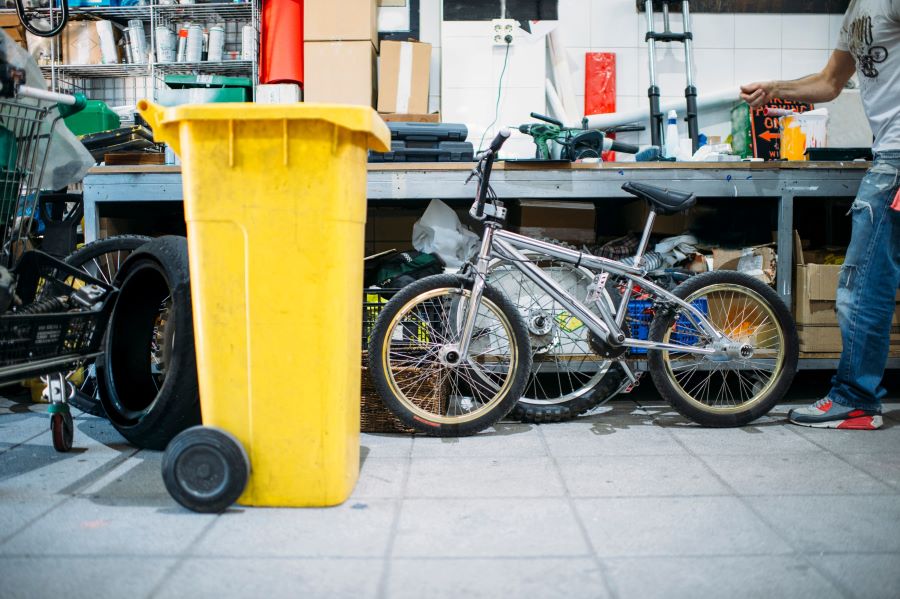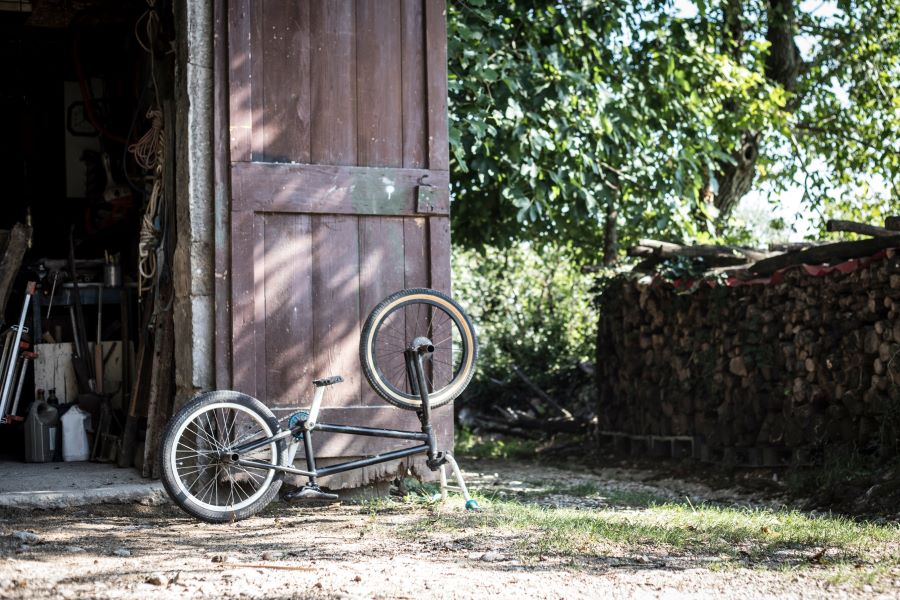This post may contain affiliate links. If you click an affiliate link and make a purchase, I may earn a commission. Also, as an Amazon Associate, I earn from qualifying purchases.--
Coaster bikes are brakes that are activated by pedaling backward. They are sometimes called backpedal brakes.
Coaster brakes are the standard brakes found on most kids’ bikes or adult cruiser-style bikes. They are sometimes, though not regularly found on BMX bikes. By nature, they are simplistic and require little to no maintenance.
Coaster brakes are normally found on old-school bikes from the ’70s or on bikes that are regulated by a state government.
However, you do sometimes find them on BMX bikes.
In this article, I’ll discuss everything you’d need to know about BMX coaster brakes. From their mechanisms and abilities to how to use and remove coaster brakes.

What are Coaster Brakes?
Coaster brakes are braking systems that are set in motion through backward pedaling. They can also be known as backpedal brakes.
They are usually found on kids’ bikes or adult cruiser-style bicycles. However, you’d never really find cruiser brakes on technical bikes, such as mountain or road bikes.
These brakes can be pretty easy to spot.
You can see them as a brake arm attached to the chainstay on a bicycle. This is usually on the bicycle’s left side or the side opposite where the chain is mounted.
On the same note, some high-end adult bikes may also have an internal gear hub. Although, they’d have a coast brake but no brake arm attached to a chainstay.
These variants are a bit rare, and they are considered pricey high-end hubs. So, you won’t usually find them on kids’ bikes.
What Are The Most Common Type Of Brakes On BMXs?
The most common 7 types of brakes you will normally find on BMXs are:
| Type Of Brake | Pros | Cons |
| Cantilever | High quality braking system | Require maintenance and proper set up |
| V-Bike Brakes | Lightweight and good braking | Can collide with rider’s clothes or body |
| U-Brakes | Most popular BMX brake | |
| Gyro Or Rotar | Ideal for tangle-free freestyling | Higher maintenance required |
| Coaster | Low maintenance required | Make freestyling difficult |
| Caliper | Generally a solid brake | Don’t work well on wider tires |
| Mechanical Disc Brakes | Highly efficient modern braking system | Not suitable for every type of BMX |
How do Coaster Brakes work?
All the action in the coaster brakes occurs in the rear hub. Over here, the brake hub is the center component that keeps the spokes attached. And the rear axle is what travels through the rear brake hub.
These brakes function by pushing a brake pad against the inside of the wheel’s hub. This creates friction between the moving and stationary parts of the wheel. As a result, the wheel reaches a forced stop.
This all occurs within the coaster brake hub, leaving no moving parts outside that get pushed around.
How to use a Coaster Brake?
Well, for starters, I’d like to state that you should steer clear of hilly areas or speeds above five miles per hour.
This is because none of these bikes have nearly the same braking power you would find on an average handbrake. Whether you have calipers or a disc brake, these would always end up being more durable than a coaster bike.

Why Use a Coaster Bike?
Though coaster brakes may seem less helpful than an average handbrake, you should know that there’s a reason many bikes still use them.
In particular, the CPSC has set restrictions on most 12, 14, and 16-inch bikes. Due to these protocols, children’s bikes are forced to have coaster brakes, as they were considered the safest alternative for kids when the regulation was set.
The unfortunate part of this is that, even 50 years later, CPSC is yet to update these regulations. As a result, though coaster brakes are less efficient, they are still lawfully required to exist among a handful of bicycles.
However, with that being said, there are few exceptions to these laws. This is due to some gray areas in how CPSE applies its regulations. So, a few smaller kids’ bikes can exist without coaster brakes.
But, once again, this is only an insignificant portion of them.
How Do You Remove Coaster Brakes From BMX Bikes?
Since coaster brakes are integrated into the hub of a bike, removing them may end up being more challenging than you expect. You’d end up having to either replace or modify the entire rear hub.
However, lucky for you, specific bikes might have freewheel kits designed for them. These can help make their removal process a lot easier.
Yet, I still don’t recommend removing the bike’s hub as a DIY task. It is a complicated process, and there are a lot of things that could go wrong.
On a similar note, if you’re still brave enough to attempt a DIY bike removal, you should pay close attention to the type of bike you have.
In particular, you should definitely never remove a coaster brake from bikes with only a front hand brake. This can make the bike really unsafe and result in the rear tire simply popping up when the brake gets engaged.
Why Do Some People Prefer Coaster Brakes?
Despite coaster brakes having only a few practical uses and existing due to niche regulations, people still prefer them.
In general, some people find that coaster brakes deliver more consistent, softer, and smoother stopping powers in city traffic.
Realistically, few people would choose a BMX bike for travel in a busy city. That really is not what they are for.
Likewise, you might also like coaster brakes because of how clean they look. They don’t come with any external cables hanging out of their brake hub, so you can have them without being bothered by untidiness.
Looking into technical aspects, you might notice that coaster brakes are easier to change in subtler increments. They are stress-free and intuitive to deal with, plus modulating gears can be done without losing all momentum.
Put simply, coaster brakes are valued for their low maintenance. They are old-school brakes that aren’t overly complicated by modern technology.
They can exist without any need for adjustments.
What Do Some People Dislike About Coaster Brakes?
As brushed upon earlier, people dislike coaster brakes for their impracticality.
Going too fast on a bike with coaster brakes is a dangerous gamble; most of these brakes are very outdated, so you don’t really know the limits of their abilities.
And, in most cases, they do not provide sufficient braking power for their intended purposes.
Not to mention, the general act of backpedaling is also a confusing concept to many. Often, people find it inconvenient that you can’t pedal back into your starting position (as you would on a non-coaster brake bike). Furthermore, due to design, you’re usually restricted in terms of terrain.
Coaster brakes can only work as upright bicycles. Using them as road bikes can be a challenge to deal with. Their leaned-over position and limited speed aren’t made for fast-paced and smooth landscapes.
Likewise, considering technical aspects, people often find the internal-gear hub complicated. The design limits options for lubrication, leaving only a few possible upgrades.
For example, coaster brakes aren’t compatible with derailleur gearings or chain tensioners.
And, since most of these bikes come with only coaster brakes, you don’t really have a fall-back option in the case of brake failure.
Unlike typical bikes with front brakes, coaster brake bikes only rely on rear wheel braking – this is a dangerous gamble that could leave you unexpectedly brakeless.

Are Coaster Brakes Problematic on Adult BMX Bikes?
As I mentioned earlier, coaster brakes do exist on adult bikes, including some BMXs. Often, you can find that they’re exceptional alternatives for use in flat areas and towns.
But, since the brakes aren’t very durable and heat up quickly and easily, I do not recommend them for fast speeds, hilly terrain, or technical riding.
On a similar note, you’d find that they aren’t ideal for added loads or an installed baby bike seat as well. Although, you can make it work to some extent if you want.
You’d just have to be sure to ride at a slower pace without straining the brakes.
Since you aren’t allowed to have slow and controlled stops with these bikes, coaster brakes cause sudden jolts.
These stops are even more pronounced with the extra weight of a child seat or a trailer. And in extreme instances, it can even result in the rider losing balance or falling over.
In consequence, once again, I recommend that you should avoid hilly regions and stick to a slower speed limit as much as possible.
The Bottom Line
Compared to modern biking technology, coaster brakes are like antiques.
They don’t have significant importance compared to standard bikes, but they still have an understandable allure.
So, if you do end up investing in a BMX coaster bike, you should always try to understand the intended purposes of these bikes and their limitations.
Don’t be reckless and speed while using coaster brakes. Understand their capabilities and ride accordingly. If utilized correctly, coaster brakes can be ideal choices for your preferred braking system.
